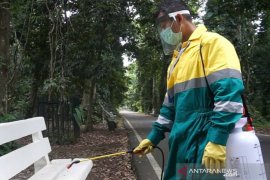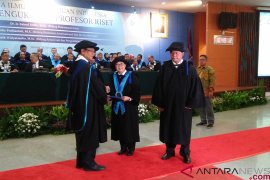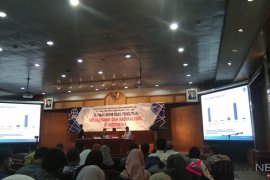The Sivenesia ventilator offers both CPAP and BiPAP operation modes, P2ET researcher Eko Joni Pristianto said in a statement received here on Saturday.
"CPAP and BiPAP are categorized as the most effective non-invasive treatments and are the first choices that are most commonly used for patients with respiratory issues," he explained.
The availability of breathing aids, such as ventilators, has become very important in handling critical COVID-19 cases, whose number has continued to rise in every health facility, he pointed out.
In CPAP (Continuous Positive Airway Pressure) mode, the Sivenesia ventilator will produce one level of positive air pressure at a constant and continuous pace to help keep patients' airways open, Pristianto informed.
Meanwhile, in BiPAP (Bi-level Positive Airway Pressure) mode, the ventilator will produce two levels of positive air pressure -- when the patient breathes in (inhales) and when the patient exhales -- so that the patient can breathe more comfortably, while maintaining the required PEEP (Positive End-Expiratory Pressure), he added.
Ventilators with CPAP and BiPAP modes are usually recommended by doctors for patients suffering from sleep apnea, a condition in which a patient's respiratory system stops for a while during sleep, which can lead to poor sleep quality, he said.
The CPAP or BiPAP are pressure-based ventilator modes that aim to prevent airway obstruction, a symptom experienced by many COVID-19 patients, as well as to train the respiratory muscles before the patient can breathe normally, Pristianto said.
The purpose of using a ventilator is to keep the patient's respiratory tract open, while the basic difference between the CPAP and BiPAP modes lies in the level of breathing comfort, he explained.
In CPAP mode, the Sivenesia ventilator will provide continuous positive pressure air flow through a tube connected to the nose or through the mouth, which means patients may experience discomfort, especially during the exhalation process, he further said.
This problem could be particularly troubling for patients with neuromuscular disease, an extensive group of disorders characterized by motor changes produced by injury or neurological disorders, he added.
Meanwhile, in the BiPAP mode, the ventilator will provide variable pressure when the patient inhales and when the patient exhales so that the patient can breathe more easily, he said.
The Sivenesia has undergone a series of testing stages, including laboratory-scale testing in the initial stage, where testing focuses on technical issues, he informed.
"We have carried out a function test at the Health Facility Security Center (BPFK) of the Indonesian Ministry of Health and have passed the test, where we received certification,” he said.
The function test, which lasted for 21 days non-stop, included a series of trials on performance, system endurance, and electrical safety, he disclosed.
“In the next stage, we will conduct a Sivenesia clinical trial as the next step to obtain a distribution permit as a form of dissemination of our research results," he added.
Related news: COVID-19 case spike largely attributed to delta variant: LIPI
Related news: Locally produced ventilator secures int'l certificate: Minister
Related news: Australia provides ventilators to support Indonesia's COVID-19 fight
Translator: Martha HS, Aria Cindyara
Editor: Sri Haryati
Copyright © ANTARA 2021












